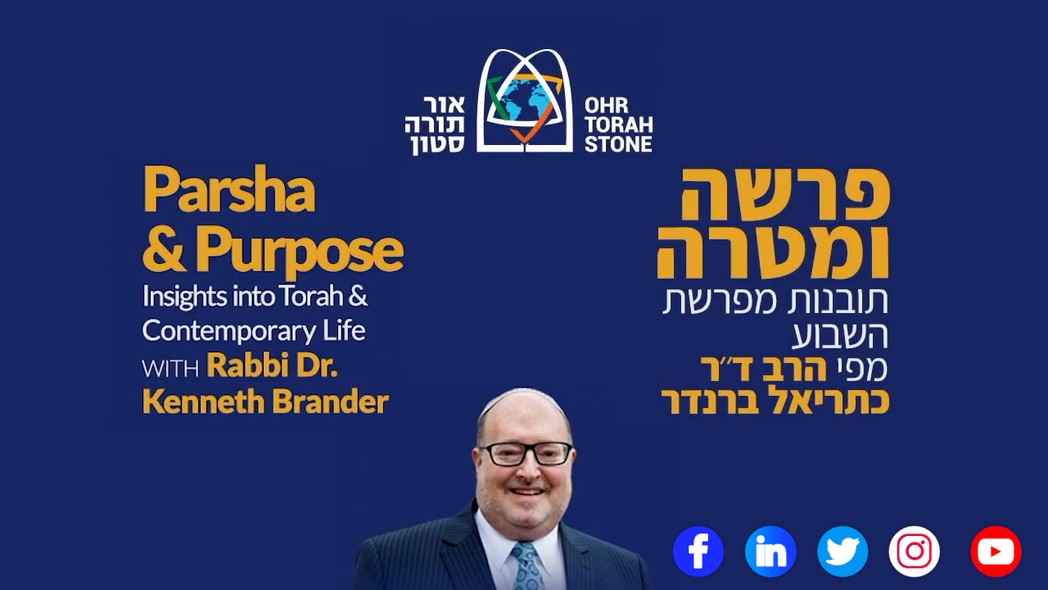Parshat Vayelech marks the transition from Moshe to his prize student, Yehoshua. They are such different leaders, even though they have similar experiences.
For example, when Moshe has to cross the Yam Suf with the Jewish People, he does it by his mighty staff. (Exodus 13:17 – 15:21)
In contrast, Yehoshua has to cross the Jordan with the Jewish People. He tells the Jewish People, we can cross the Jordan only when there is a representative of every tribe. That begins the process with the Aron Brit HaShem, with the Ark of the Covenant. (Joshua 3:11-13)
Moshe formalizes a relationship between God and the Jewish People on Mount Sinai; Moshe is alone. (Exodus, Chapters 19-20)
When Yehoshua formalizes a relationship between God and the Jewish People, he tells the Jewish People that they must part of that covenant. They will have to agree to certain norms and mores, and as part of this covenant, they will have to state that they are committed to it. (Joshua, Chapter 24)
When Moshe becomes the leader, God tells him, “Shal na’alecha me’al raglecha”. Take off your shoes. (Exodus 3:5)
Shoes represent someone who treads in the everyday. God is making clear to Moshe, ‘You are going to be the leader of the Jewish People. You are not going to tread in the everyday.’
When Yehoshua becomes the leader, God tells him, “Shal na’alcha”, take off one shoe. (Joshua 5:15)
As the second leader of the Jewish People, you will be part of the everyday. But you will also be a spiritual oasis; you won’t be part of the everyday. You will have to tread between two paradigms at the same time.
Moshe has a prayer, “Az Yashir Moshe”, that he leads, and then the Jewish People follow. (Exodus 15:1-19)
Yehoshua’s prayer is “Aleinu Le’shabe’ach”, ‘we will pray together’. (Teshuvot HaGe’onim, Sha’arei Teshuva, Chapter 43)
They are different paradigms of leadership.
The paradigm of Moshe’s leadership is necessary to move the Jewish People from a slave mentality to a nation of destiny. Yehoshua’s leadership is necessary to move the Jewish People to a paradigm in which they enter the land and they will be able to engage in partnership and collaboration.
We live in a world of “Yehoshua”, where we are all leaders in our own lives and in the lives of our families and our communities. It is not about one person, but about the capacity to work together, to engage – like Yehoshua – in a partnership: to cross the body of water together, to tread by wearing one shoe on and one shoe off, to say a prayer such as “Aleinu Le’shabe’ach”, which emphasizes the need for all of us to collaborate.
We’re told in the Gemara:
פני משה כפני חמה; פני יהושע כפני לבנה
Moshe’s face radiates like the sun; Yehoshua’s face radiates like the moon.
(Bava Batra 75a)
At first glance, it seems like Moshe is the most powerful leader, while Yehoshua is a minor leader. But there is a different, deeper message here.
When you go out in the sun, all you see is the sun. That was Moshe. All you saw when Moshe led was the fact that he needed to do everything.
But when you go outside at night and you see the moon, you also see all the stars around the moon. Yehoshua’s paradigm of leadership was one in which he collaborated with others to move ideas forward.
As we are in the middle of the high holiday season and we refocus on our lives and what we want to accomplish, let us remember it is the Yehoshua paradigm of leadership that ultimately succeeds in bringing the Jewish People into the Land of Israel.
It is a paradigm of partnership and engagement, a paradigm of leadership that the Jewish People did not rebel against even once. It is the Yehoshua paradigm of leadership that we need to implement in our lives, in the lives of our children and family, and in our communities.
Shabbat Shalom and G’mar Chatima Tova.




